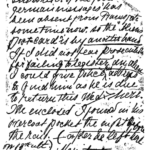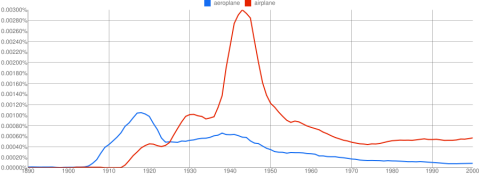
Although the war had been over for more than a year by this point, in 1920 the editor of Sea, Land and Air issued a rather hysterical warning of the danger of foreign pilots being allowed to fly in Australia.1
The passenger-‘plane of to-day may be the bomber of to-morrow. It depends on the man who owns the machine, and the one who flies it, upon whom she will drop her bombs. If he be an Australian it is pretty certain that he will not let them fall on his own countrymen. At present there is nothing to say that the man who is learning to fly here, or the man who is going to own the machine for him to fly, shall be even a British subject. In certain parts of Australia it is reasonably probable that he will be a German, for instance.
Australia is quite big enough to offer concealment while the alien airmen replaces passenger seats by bomb-racks. Unless there is control of flying, every possible enemy of Australia can be an aircraft-owner here.2
Hence the need for ‘Regulations that insist that no aliens may either fly or own aircraft in Australia’.3 What’s going on here?
The immediate occasion for the editorial was the arrival in December 1919 of the first flight from Britain to Australia, which demonstrated that, like England, ‘Australia, too, is no longer an island’:
If a bridge were invented which could unroll itself as its travellers walked along it, connecting Australia with Timor one day, with Japan another, and with a man-o’-war in mid-Pacific another, Australia would be perturbed. That is exactly the kind of bridge that has been built and the working of which Sir Ross Smith has demonstrated. Yet, in such a will-o’-the-wisp bridge the Commonwealth Government does not take even a languid interest.4
But the threat that is being constructed is not actually of an external menace; instead it’s an enemy within. In fact it’s an update of the the mystery aeroplane panic two years earlier (albeit without any mystery aeroplanes), combined with the threat of the commercial bomber. In 1918, the idea (as far as there was a coherent one) had been that German spies were flying aeroplanes from ships off the coast or from secret aerodromes in the bush. Now, the suggestion is that the spies will arrive in peacetime and operate under the guise of perfectly legal civilian flying activities. Then, when the next war comes they will convert their civilian aircraft into bombers and strike:
When war was declared in 1914 every German ship that could do so slipped out of Australian ports, and put to sea. Had it been possible for them to ship guns, and bombard Sydney and Melbourne a few hours after their departure, it would have been very unpleasant. An aeroplane that slips out of its ‘drome in war-time can do that.3
Convertibility was an idea that was just beginning to gain public visibility at this point, when nations were starting to think about what kind of airpower they would need in the postwar world, and just as importantly how they could maintain it. At this point — when virtually all airliners were ex-bombers, anyway — it was attractive as a way to both sustain a relatively large air force on the cheap and justify government support for fledging commercial aviation companies through subsidies and so on. A year earlier, the British Chief of the Air Staff at war’s end, Major-General Frederick Sykes, had (ill-advisedly, for his career) proposed that the post-war RAF incorporate commercial bombers to enhance its striking force.5 Convertibility was also proposed in New Zealand in 1918 and 1922, for example, when the idea of a permament air force was being discussed. And it was also advocated in Australia by Major-General J. G. Legge, in a speech he gave in Sydney on 7 January 1920 on ‘Commercial aviation in Australia’, which is conveniently reprinted in this very issue of Sea, Land and Air.
Legge’s speech is quite a detailed analysis of the prospects for civil aviation, including potential routes, costs, fares, competition, and so on, but his interest, ultimately, was in the defence of Australia. He argued that, in addition to eighteen ‘Permanent Air Service’ squadrons,
we need a large force of commercial machines, equal to at least 200 of the Handley-Page V/1500 type, more if we can have them. These are the machines that will do the heavy transport in war. They will move troops, if necessary, over the stretches where railways are wanting, they will even move them by air faster than railways, they will carry petrol and supplies to the advanced bases for the fighters, and — most important of all — they will be capable of carrying and dropping bombs of high explosive, totalling 1,000 tons; in other words they will be armed with the destructive power of 22 first-class battleships and have far greater speed.6
To be clear, these ‘commercial machines’ would not be government-owned or -operated (except in wartime). Indeed, Legge’s purpose in giving the speech was to drum up interest from potential investors:
Sydney is the capital of the most populous State in the Commonwealth. I have an idea that it also has the deepest pocket, and I therefore trust that this great focus of business will realise that here is a proposition to be tackled at once, that there is money in it too, but above all that it is the only sure means by which Australia can be made safe. I appeal therefore to all the men of Sydney to consider this and put up their bit in any big commercial undertaking that may be started in this country; to remember those flying boys of ours, who laughed at death, and will do it for you again — if you will give them the wings.7
His appeal was echoed by Oswald Watt, one of Australia’s leading wartime aviators, and the NSW premier William Holman (although very airminded, no relation). The printed version of his speech is interspersed with full-page advertisements from hopeful British aircraft manufacturers, for the Vickers Vimy Commercial, the Bristol Triplane or Pullman (above), the Westland Limousine and the Central Centaur 4.
What’s extraordinary about this speech is that this isn’t some self-important retired officer sounding off about his pet theories; it’s actually the Chief of the General Staff, that is the professional head of the Australian Army, sounding off about his pet theories. He’s not speaking in an official capacity about official plans for an Australian air force, because there weren’t any yet: that was the job of the Air Board, which was to have its first meeting on 29 January 1920, three weeks after Legge’s speech, and he wasn’t even on it.8
Perhaps it was precisely because of a lack of influence that he so publicly outlined his own vision — this was actually the third of four speeches on aviation he gave in various state capitals in late 1919 and early 1920, apparently before audiences of a couple of hundred of the local great and good. Legge had been very interested in aviation for a couple of years, and was a key figure in the postwar push for an Australian air force of some kind.9 He was already interested in commercial bombers. In September 1918 he supposedly said to a Sea, Land and Air writer that
Aero clubs are to be encouraged because they, in turn, would stimulate the con- struction of ‘planes for private or com- mercial purposes, and any ‘plane that can carry passengers can carry bombs.10
And in April 1918 he did say that
These raiders are knocking about and some of them have sea planes. Supposing one came over Melbourne and said ‘I will drop bombs on your banks I will give you such and such a time to send your money down to a certain place on the beach. If you do not do that I will blow you to smithereens.’ You have not got a single gun here to shoot at them and you would either have to have your public buildings knocked about or give them your money. That is the position at present.11
This, of course, was at the height the 1918 panic, just before he ordered two aircraft from Point Cook to search the coast of Bass Strait for the source of the mystery aeroplanes. Which brings this back to the paranoid Sea, Land and Air editorial quoted at the start of the post. I’ve previously argued — well, hinted — that the 1918 panic is the genesis of Legge’s interest in airpower, and so should at least be part of the origin story of the RAAF. Now I’m wondering if there’s a connection between Sea, Land and Air‘s revival of the idea of an aerial enemy within and its promotion of Legge’s call for Australian airpower, both of which depend on the idea of the commercial bomber. The alien airmen of 1918 were will-o’-the-wisps, but their legacy might have been more solid.
Image source: Sea, Land and Air (Melbourne), February 1920, 765.
![]() This work is licensed under a Creative Commons Attribution-NonCommercial-NoDerivatives 4.0 International License.
Permissions beyond the scope of this license may be available at http://airminded.org/copyright/.
This work is licensed under a Creative Commons Attribution-NonCommercial-NoDerivatives 4.0 International License.
Permissions beyond the scope of this license may be available at http://airminded.org/copyright/.
- Sea, Land and Air has been digitised in its (near?-)entirety and is freely available from American Radio History, which credits the National Library of Australia for the scans although they’re evidently not in Trove. [↩]
- Sea, Land and Air (Melbourne), February 1920, 732. [↩]
- Ibid. [↩] [↩]
- Ibid., 731. [↩]
- Brett Holman, ‘The shadow of the airliner: commercial bombers and the rhetorical destruction of Britain, 1917-35’, Twentieth Century British History 24 (2013), 495-517, at 501-502. [↩]
- Sea, Land and Air (Melbourne), February 1920, 757-8; emphasis added. [↩]
- Ibid., 768; emphasis in original. [↩]
- C. D. Coulthard-Clark, The Third Brother: The Royal Australian Air Force 1921-39 (North Sydney: Allen & Unwin, 1991), 8-9; C. D. Coulthard-Clark, No Australian Need Apply: the Troubled Career of Lieutenant-General Gordon Legge (Sydney: Allen & Unwin, 1988), 180. [↩]
- See Coulthard-Clark, No Australian Need Apply, 178-85. [↩]
- Sea, Land and Air (Melbourne), February 1920, 756. [↩]
- NAA: MP367/1, 437/1/115, Part 1, ‘Press Censorship Conference’, 16-9 April 1918, 221. [↩]





The concept of the compromise ‘Bomber Transport’ persisted, but at a price in performance in any one role.
The Short Stirling was built to such a specification, was of limited performance as a bomber, but morphed into a very successful glider tug, transport and paratroop dropper with very little modification once it was eclipsed as a bomber by the Lancaster, which was restricted in a transport role.
A convertible bomber may have been useful in times of financial constraint and air superiority/supremacy, but in a conflict of equals, compromise comes at a price,
Thanks, that’s interesting about the Stirling, I didn’t know it had a transport requirement.
You’re quite right. Commercial bombers (as in ad-hoc conversions of civilian airliners) only ever made much sense as weapons of the weak, usually small or non-national air forces, and even then they were a desperate measure. I guess the RAF did see itself as weak in the Empire (where bomber transports would most likely be used), at least locally, given the length of time it would take for reinforcements to arrive.